
THE hummingbirds are often thought of as delicate tropical birds, yet out of the 320 or so species, 16 species of 11 different genera occur in North America. Species range in size from the sombre brown giant hummingbird (Patagona gigas) 20cm (8in) in length, to the bee hummingbird (Mellisuga helenae), the smallest bird in the world, more diminutive than many moths and so small that it is preyed upon by large insects in its native Cuba.
North America’s hummingbirds are predominantly small green iridescent species about 7.5cm (3in) in length, with beaks of various sizes. They lack the flamboyant plumage of the tropical species, but are nevertheless attractive and many have small patches of red purple or blue plumage on their cheeks or head. Being located in North America they have been studied more than other hummingbird species. Anna’s hummingbird (Calypte anna) is perhaps the most-studied and best-known American hummer. In winter the species is confined to southern coastal California, and throughout the year is a regular visitor to gardens, where hummingbird feeders are often provided. Apart from their glittering plumage, hummers’ popularity is explained by their indifference to humans and their sudden appearance when nectar-producing plants are provided. If a garden is planted near houses or people anywhere from Canada to Chile or Argentina – whether it be in the desert, forests or mountains – it will be visited by hummingbirds. The distribution of Anna’s hummingbird used to be divided into two, with populations in the extreme north of California and in the south, but the planting of exotic flowers and trees, especially eucalypts – a favourite of this species – and the provision of hummingbird feeders have all encouraged the species to extend its range from north to south coastal California, and recently into Mexico, without a break.
هذه القصة مأخوذة من طبعة December 18, 2019 من Cage & Aviary Birds.
ابدأ النسخة التجريبية المجانية من Magzter GOLD لمدة 7 أيام للوصول إلى آلاف القصص المتميزة المنسقة وأكثر من 9,000 مجلة وصحيفة.
بالفعل مشترك ? تسجيل الدخول
هذه القصة مأخوذة من طبعة December 18, 2019 من Cage & Aviary Birds.
ابدأ النسخة التجريبية المجانية من Magzter GOLD لمدة 7 أيام للوصول إلى آلاف القصص المتميزة المنسقة وأكثر من 9,000 مجلة وصحيفة.
بالفعل مشترك? تسجيل الدخول
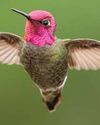
The World's Best-Known Hummingbird?
Intensively studied, the gem-like Anna’s hummingbird is a welcome visitor to the gardens of America’s most populous state: California. Bill Naylor investigates its life history
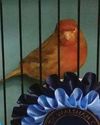
The charm of the English Cinnamon
Despite its long and complicated history, the true Cinnamon canary is still with us – in the hands of a tiny group of breeders. DONALD SKINNER-REID reckons it deserves wider appreciation
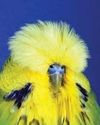
Spangles: a personal overview
FRED WRIGHT relates a budgie story of over-exploitation, consequent problems and abundant potential for the future

New converts to old breeds
Old and rare canaries have a reputation for adding fresh interest and challenge to the hobby. PETE HOOK and NICK JOY agree, and explain the birds’ charm to Dave Brown

Themed aviaries are a hit with the public at annual Stafford show
DECORATIVE AVIARY DISPLAYS from a CBS and an online bird keeping advice group were voted in the top three by visitors for the inaugural Stafford Aviary Competition.
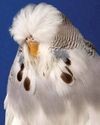
Pieds with potential
More than just a lesser variety, the dominant pied will introduce challenge and change into most studs, reckons CLIVE WAKEMAN. Here he discusses pairings to try and others to avoid

Club News
Welcome to the club and show pages – the bit that’s all about you Results: convention, specialist & rare and Breeder of the Year

Canaries Month by Month:
With Christmas around the corner, BRIAN KEENAN is well into his winter programme, and reckons he might deserve a nice outcross
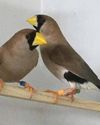
Smart Choice, Docile Nature
Dave Brown welcomes the masked grassfinch to his birdroom and shares advice on this lovely Australian species
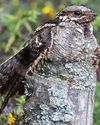
The truth about the ‘flying toad'
Odd local names and weird superstitions can’t hide the beauty and elegance of the nightjar, a species that has made a fascinating subject in a few zoo collections, reveals BILL NAYLOR